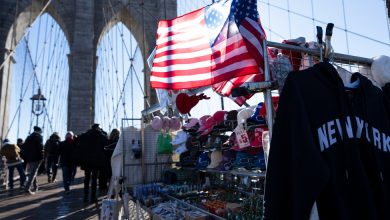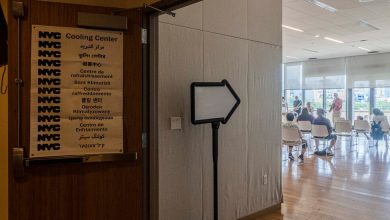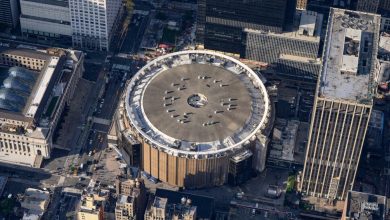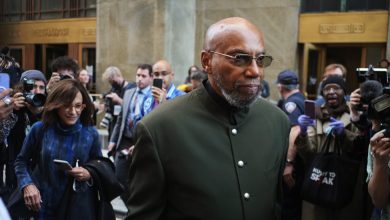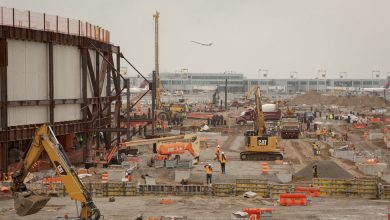New York to Pay $13 Million Over Police Actions at George Floyd Protests
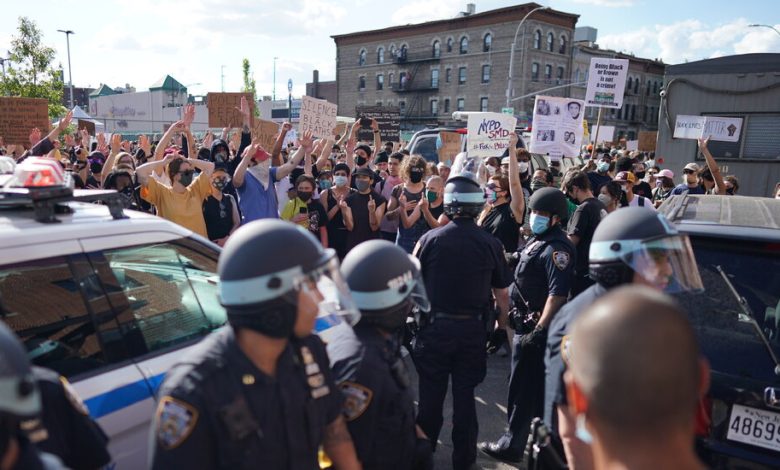
On the evening of June 2, 2020, Sabrina Zurkuhlen joined a protest march on the West Side Highway that was spurred by the death of George Floyd in Minneapolis eight days earlier.
When marchers were confronted by a line of police officers that stretched across the highway near Vesey Street, Ms. Zurkuhlen, 33, began walking backward while recording with her phone, according to a class-action lawsuit in which she was a plaintiff. An officer pointed at her, the lawsuit said, lunged at her, knocked the phone from her hands and began striking her with a baton as he tackled her.
The lawsuit, filed in Federal District Court in Manhattan, said other officers beat and kicked Ms. Zurkuhlen and that she was handcuffed and held in custody for about eight and a half hours before being issued a summons for a curfew violation. That summons was later dismissed, the suit said, adding that she never recovered her phone.
On Wednesday, the City of New York agreed to pay about $13.7 million to settle the class-action suit, which said that unlawful police tactics had violated the rights of protesters over several days in late May and early June of 2020. A stipulation of settlement entered into an electronic docket just before midnight stated that the city would pay $9,950 apiece to up to about 1,380 peoplewho “were arrested and/or subjected to force by N.Y.P.D. officers” at 18 specific locations in Manhattan and Brooklyn.
The plaintiffs’ lawyers — who are associated with the National Lawyers Guild, a left-leaning group — said the $13.7 million sum would be the largest ever paid to protesters.
In 2013 the city agreed to settle hundreds of claims by people who said they were wrongly arrested during the 2004 Republican National Convention in Manhattan, paying $10.3 million to those who had been taken into custody and $7.6 million in lawyers’ fees.
“N.Y.P.D.’s suppression of dissent has continued through numerous mayoral administrations,” Wylie Stecklow, one of the class-action lawyers, said in a statement.
The Police Department referred a request for comment to the city’s Law Department, which did not immediately respond. The settlement agreement said that the defendants denied liability and denied having had any pattern or practice that deprived anyone of their rights.
The settlement, which is pending approval by a judge, resolves one of the more significant cases among several to emerge from the protests in New York City, which saw mass arrests, the use of pepper spray and property damage and looting.
The killing of Mr. Floyd by a police officer in Minneapolis sparked a nationwide outcry over police brutality and a broader reckoning over race, power and accountability. People across the country chanted “Black Lives Matter” as they took part in marches that filled streets, highways and bridges.
Most of the marches in New York City were peaceful, but the police said that more than a dozen of their vehicles were burned. And looting took place in various neighborhoods, most prominently in SoHo, where on consecutive nights people who often seemed to have little involvement with the protests broke into and plundered luxury shops.
Mayor Bill de Blasio instituted a curfew, the city’s first in 75 years. As the looting waned, police officers dispersed or arrested people who were marching outside the prescribed hours. According to the New York State attorney general’s office, the police made just over 2,000 protest-related arrests between May 28 and June 7, 2020.
New York Times journalists covering the protests saw officers repeatedly charge at protesters out after curfew with little apparent provocation, shoving people onto sidewalks and striking them with batons.
Some of the people who stand to receive payments under the class-action settlement were arrested. Others were not taken into custody but, the suit asserted, were subject to police conduct meant to impede and deter their ability to exercise First Amendment rights.
The protesters’ lawyers said that conduct included the indiscriminate use of pepper spray or batons and crowd control tactics like “kettling,” which corralled protesters between police lines and prevented them from leaving.
In March, the city settled a lawsuit over that approach, agreeing to pay at least $21,500 to each of about 320 protesters who said they were surrounded on June 4, 2020, in the Mott Haven area of the Bronx by police officers who then ran at them while swinging batons and using pepper spray.
The protesters’ lawyers attributed that type of response largely to what they described as decades of misguided police training, which they said looked upon many forms of protest as civil disturbances, emphasizing the use of force to disperse and demoralize protesters over the protection of civil liberties.
“Since at least the 1990s,” the class-action suit said, “the N.Y.P.D. has failed to appropriately train its officers on the proper handling of First Amendment assemblies.”
Lawyers for the city denied in court papers that the police had a history of unconstitutional handling of protests. While acknowledging that many of the 2020 protests had been peaceful, they portrayed the police as contending with a powerful storm of anger interspersed with serious criminal activity, all taking place against the backdrop of a pandemic.
“Some protests devolved to looting and rioting,” those lawyers wrote. “Protesters set police cars ablaze; vandalized precinct houses; threw rocks, bricks, bottles at officers; stabbed, punched, bit officers; and hurled Molotov cocktails at officers.”
Both sides used visual evidence to bolster their arguments. In one court filing, lawyers for the city included photographs of four bloodied police officers who they said had been injured by protesters.
The protesters’ lawyers, for their part, drew from what they said were thousands of police body-camera and helicopter videos to compile records of officers wielding batons, using pepper spray or shoving demonstrators.
One video from outside Barclays Center in Brooklyn on May 29, 2020, shows several police officers, including a commander, aiming overhand baton blows at a figure on the ground. Another video shows a group of officers following protesters down a sidewalk in East Flatbush on May 30 and knocking some to the pavement.
Well before the city produced that material, video from protests circulated nearly contemporaneously on social media.
One video clip, recorded in Brooklyn, showed two police SUVs ramming a crowd of people standing in a street. Another showed an officer in Lower Manhattan crossing Broadway while brandishing a pistol as people screamed and fled.
